- News
- Reviews
- Bikes
- Accessories
- Accessories - misc
- Computer mounts
- Bags
- Bar ends
- Bike bags & cases
- Bottle cages
- Bottles
- Cameras
- Car racks
- Child seats
- Computers
- Glasses
- GPS units
- Helmets
- Lights - front
- Lights - rear
- Lights - sets
- Locks
- Mirrors
- Mudguards
- Racks
- Pumps & CO2 inflators
- Puncture kits
- Reflectives
- Smart watches
- Stands and racks
- Trailers
- Clothing
- Components
- Bar tape & grips
- Bottom brackets
- Brake & gear cables
- Brake & STI levers
- Brake pads & spares
- Brakes
- Cassettes & freewheels
- Chains
- Chainsets & chainrings
- Derailleurs - front
- Derailleurs - rear
- Forks
- Gear levers & shifters
- Groupsets
- Handlebars & extensions
- Headsets
- Hubs
- Inner tubes
- Pedals
- Quick releases & skewers
- Saddles
- Seatposts
- Stems
- Wheels
- Tyres
- Health, fitness and nutrition
- Tools and workshop
- Miscellaneous
- Cross country mountain bikes
- Tubeless valves
- Buyers Guides
- Features
- Forum
- Recommends
- Podcast
review
£1,600.00
VERDICT:
Versatile aluminium 1X bike that's well-capable of handling both the daily commute and rough rides into the back of beyond
Weight:
9,600g
Contact:
At road.cc every product is thoroughly tested for as long as it takes to get a proper insight into how well it works. Our reviewers are experienced cyclists that we trust to be objective. While we strive to ensure that opinions expressed are backed up by facts, reviews are by their nature an informed opinion, not a definitive verdict. We don't intentionally try to break anything (except locks) but we do try to look for weak points in any design. The overall score is not just an average of the other scores: it reflects both a product's function and value – with value determined by how a product compares with items of similar spec, quality, and price.
What the road.cc scores meanGood scores are more common than bad, because fortunately good products are more common than bad.
- Exceptional
- Excellent
- Very Good
- Good
- Quite good
- Average
- Not so good
- Poor
- Bad
- Appalling
The Polygon Bend CT5 is a rough and tough 'urban sport' bike that offers loads of versatility. It's not the lightest bike out there but it'll handle everything from all-weather commuting to gravel tracks, and it's a lot of fun.
I've really enjoyed riding the aluminium-framed Bend CT5 over all kinds of roads over the past few weeks: asphalt, gravel, towpath and even a bit of singletrack. It offers a fairly upright riding position (more on that in a mo) and a decent level of comfort, largely thanks to 30mm-wide Schwalbe G-One Speed tyres, and it's easy to fit mudguards and racks thanks to eyelets on the frame and fork.
> Find your nearest dealer here
The Bend CT5 really shows its worth over poorly surfaced roads. I have a ride from my place where the tarmac gradually deteriorates, then there's a bit of towpath by the canal, a stony section where one minute the surface is flat and rock hard, the next it's a bit rippled, and then there's a bit of loose shingle on an off-camber bend... Interesting and challenging.
The Polygon Bend CT5 doesn't just cope with this kind of stuff, it eats it up, giving you the confidence to tackle the next section that bit quicker and generally putting a smile on your face.
The bike doesn't get knocked about easily, holding its line well when the front wheel hits a bump or hole rather than bouncing you off in an unwanted direction. That means you don't find yourself constantly correcting the steering over uneven roads.
The brakes help there too. These are SRAM Rival hydraulic disc brakes operating on 160mm rotors front and rear and they've performed superbly throughout the test period. It's not the all-out power that's so valuable, it's the amount of control you get at your fingertips – the modulation, if you like – whatever the conditions. That could be valuable if you're using the Bend CT5 for commuting, for example, and you have to ride at a particular time, even if the rain is hosing down.
The Bend CT5 isn't particularly light – our 56cm model tips the scales at 9.6kg (21.2lb) – but it's one of those bikes that you can steadily winch up really, really steep and loose climbs if you head off well-surfaced roads and on to forest tracks, for example. It's well balanced. On damp, sharp hills where standing up on the pedals would result in the rear tyre spinning, you can just sit in the saddle, keeping your weight over both wheels, and you'll get there. The same is true on less severe climbs if you have a load on board – if you're carrying clothes and laptop to or from work, for instance.
A lot of that is down to the gearing. The Bend CT5 is fitted with a SRAM Rival 1X groupset with a single 38-tooth chainring and a wide-range 11-42-tooth WiFLi cassette.
We've covered SRAM 1X lots on road.cc over the past couple of years, and it has pros and cons. It's a little easier to use in that you never need to change from one chainring to another – although most people get along with a double just fine – and there's no chance of the chain rubbing on the front mech if you don't have one.
> Read our SRAM 1x Road first ride here
The biggest negative, as far as I'm concerned, is that you get some gert big jumps in gear ratios across such a wide-ranging cassette. The 38-tooth chainring and 42-tooth sprocket give you a 24.3in gear (with the 700 x 30 tyres fitted), if you work in such things, while the next largest sprocket is 36-tooth and gives you a 28.3in gear. It can be difficult to keep your rhythm when swapping from one to the other.
That said, the 42-tooth sprocket will get you up nearly anything – not necessarily quickly, but at least you'll keep progressing.
At the other end of the scale, I found myself running out of gears on long, fast descents. If you want to pedal at over 28mph you have to spin at more than 100rpm in the 11-tooth sprocket. If you want to pedal at over 33mph you're looking at 120rpm, so I found myself just coasting more often than usual. If you're going to ride only on tarmac and unladen you might find this 1X system under-geared.
One big plus is that the Entity disc wheels (Entity is Polygon's in-house brand) are fitted with those Schwalbe G-One Speed tyres that I mentioned, and I won't have a word said against them. These were previously called S-Ones.
When we reviewed the S-Ones on road.cc last year we said that they were a grippy, light, fast tyre and advised: "if you can fit 'em, buy 'em".
Some kinds of sticky mud can bung up the bobbly tread of the G-One Speeds, but apart from that they stick firmly to pretty much anything from wet and slimy tarmac to loose stone, getting you out of all sorts of trouble if you misjudge your line slightly. Plus, they never feel like they're sucking away your energy.
The tyres are capable of being run tubeless but the Entity wheels aren't tubeless-ready which is a shame because that would allow you to run lower pressures for greater comfort without the danger of pinch flats. If you use the Bend CT5 on asphalt the whole time that's unlikely to be an issue but if you want to add more comfort over the rough stuff you could always fit wider tyres, the stays and fork offering plenty of clearance. I got on well with the 30mm width as a fast option suited to the various types of roads I've been riding, but you could easily go for 35mm or wider if you intend to spend more time off tarmac than on it.
Speaking of comfort, I found the ride position offered by the Bend CT5 to provide plenty. I've had the 56cm model with a 565mm effective top tube, a 560mm seat tube and a 170mm head tube. The head angle is 72.5°, the seat angle is 73°, the stack height is 585.5mm and the reach is 385.1mm. Plus, the fork's tall axle to crown height pushes the front end up further.
That geometry puts you into quite an upright riding position compared to most road bikes, although there are endurance road bikes out there that are more relaxed. On the other hand, the Bend CT5 is a little more aggressive than the Genesis Datum adventure bike that we reviewed recently. As ever with geometry, it comes down to what works for you.
The lightly padded Entity Flux saddle and slim (27.2mm diameter) seatpost provide just enough give to keep you feeling happy over damaged roads and the handlebar tape is certainly grippy, although I'd have appreciated a little more cushioning to help damp vibrations coming up through the fork. I'd also have preferred more of a rearward extension to the Entity Expert handlebar. I got on really well with the variable radius shape of the drops, particularly when resting my hands within reach of the levers, but I found myself wanting more of a sweep down there for flat, open roads where dabbing the brakes or shifting gear are less of an issue.
You can see the frame welds if you go looking for them but they're not exactly conspicuous, and the same is true of the black-on-black logos and graphics that are subtle verging on incognito, in the daylight at least. At night, though, some sections zing out in car headlights, which is a neat little trick.
Summary
All-rounder is a term that gets bandied around a lot, and although no bike can offer you the best of all worlds, some are more versatile than others. The way I read it, the Bend CT5 doesn't have any pretensions to grandeur, it's a bike that'll just crack on with whatever you throw at it, and this is its greatest strength.
With a no-nonsense frameset, wide-range gears, grippy tyres and the all-weather reliability of hydraulic disc brakes, it makes a good case for itself as a year-round fast commuter. On top of that, those same attributes – perhaps swapping on some larger volume tyres – mean it's happy to head off on the gravel or other non-tarmacked roads and tracks for adventures at the weekend.
Verdict
Versatile aluminium 1X bike that's well-capable of handling both the daily commute and rough rides into the back of beyond
road.cc test report
Make and model: Polygon Bend RV
Size tested: 56cm
About the bike
State the frame and fork material and method of construction. List the components used to build up the bike.
Frame: URBAN SPORT ALX W/ FLATMOUNT, FENDER READY
Fork: URBAN SPORT ALX W/ E-THRU & FLATMOUNT, FENDER READY
Shift Lever: SRAM RIVAL 11-SPEED
Rear Derailleur: SRAM RIVAL 11-SPEED
Brakes: SRAM RIVAL HYDRAULIC
Brake Levers: SRAM RIVAL HYDRAULIC
Pedals: ALLOY BODY & CAGE
Chainset: SRAM RIVAL 11-SPEED 38T NARROW-WIDE
Bottom Bracket: SRAM GXP
Chain: KMC X-11 Cassette: SRAM PG 1130 11-SPEED 11-42T
Wheelset: ENTITY XL2 DISC 700C
Tyres: SCHWALBE G-ONE, 700x30C
Saddle: ENTITY FLUX W/ CRMO RAIL
Seatpost: ENTITY XPERT D:27.2MM OFFSET:15MM
Stem: ENTITY XPERT
Handlebar: ENTITY XPERT DROPBAR
Headset: FSA ORBIT C40 NO.42-ACB
Tell us what the bike is for, and who it's aimed at. What do the manufacturers say about it? How does that compare to your own feelings about the bike?
Polygon says: "From the daily commute to grinding out miles on the unbeaten path, Polygon Bend CT is the bike for you. Built with an ALX frame, internally routed shifting, hydraulic disc brakes, flex seat construction providing an outstanding comfort, and a unique decal system that reflects light while riding at night; Bend CT will take you an adventures for years to come."
I wouldn't say the comfort is outstanding but it's certainly good, largely thanks to 30mm tyres (that are easily swapped for something wider). The bike's biggest strength is its versatility
Frame and fork
Overall rating for frame and fork
8/10
Tell us about the build quality and finish of the frame and fork?
Both good. You can see the welds, but only if you look closely. It's a well put-together bike.
Tell us about the materials used in the frame and fork?
It's aluminium alloy (Polygon calls is ALX) with internally routed shifting.
Tell us about the geometry of the frame and fork?
It has a taller front end than a performance road bike of this size, giving a more relaxed ride position.
How was the bike in terms of height and reach? How did it compare to other bikes of the same stated size?
It's large for a 56cm bike with a 56.5cm top tube.
Riding the bike
Was the bike comfortable to ride? Tell us how you felt about the ride quality.
Yeah, pretty comfortable. I wouldn't say it's a plush ride but I never felt uncomfortable. There's loads of clearance for wider tyres.
Did the bike feel stiff in the right places? Did any part of the bike feel too stiff or too flexible?
Yeah, stiff enough. It's probably not the sort of bike you'll be banging out sprint repeats on.
How did the bike transfer power? Did it feel efficient?
As above.
Was there any toe-clip overlap with the front wheel? If so, was it a problem?
My toes just miss the front wheel here.
How would you describe the steering? Was it lively, neutral or unresponsive? Neutral.
Tell us some more about the handling. How did the bike feel overall? Did it do particular things well or badly?
The grippy tyres often get you out of trouble if you choose a bad line. It feels good, does as it's told, and just gets on with the job.
Which components had the most effect (good or bad) on the bike's comfort? would you recommend any changes?
I got on pretty well with the saddle – not oodles of cushioning, just enough. I'd definitely have preferred more backward sweep on the handlebar drops.
Rate the bike for efficiency of power transfer:
7/10
Rate the bike for acceleration:
6/10
That's not what this bike is about, really.
Rate the bike for sprinting:
6/10
Ditto.
Rate the bike for high speed stability:
9/10
Rate the bike for cruising speed stability:
9/10
Rate the bike for low speed stability:
9/10
Rate the bike for flat cornering:
8/10
Rate the bike for cornering on descents:
8/10
Rate the bike for climbing:
7/10
The super-low gearing means you'll get up pretty much anything short of a rock face!
The drivetrain
Rate the drivetrain for performance:
9/10
It's Sram 1X. Some people will get on with a single chainring system, others won't see the point.
Rate the drivetrain for durability:
8/10
Rate the drivetrain for weight:
8/10
The cassette is huge, but the single chainring is small and there's no front derailleur.
Rate the drivetrain for value:
8/10
Tell us some more about the drivetrain. Anything you particularly did or didn't like? Any components which didn't work well together?
You might feel that a 38 x 11 largest combo leaves you undergeared on the road.
Wheels and tyres
Rate the wheels for performance:
7/10
Rate the wheels for durability:
7/10
Rate the wheels for weight:
7/10
Rate the wheels for comfort:
7/10
Rate the tyres for performance:
9/10
Rate the tyres for durability:
7/10
Rate the tyres for weight:
7/10
Rate the tyres for comfort:
10/10
Rate the tyres for value:
8/10
Tell us some more about the tyres. Did they work well in the conditions you encountered? Would you change the tyres? If so, what for?
These tyres are great. Strongly recommend them!
Controls
Rate the controls for performance:
8/10
Rate the controls for weight:
8/10
Rate the controls for comfort:
8/10
Rate the controls for value:
8/10
Your summary
Did you enjoy riding the bike? Yes
Would you consider buying the bike? I'd certainly consider it.
Would you recommend the bike to a friend? I'd advise them to take a good look.
Rate the bike overall for performance:
7/10
Rate the bike overall for value:
7/10
Use this box to explain your score
There aren't all that many SRAM Rival 1 equipped bikes out there and a lot of those that do exist are cyclo-cross bikes. The price is good and so's the performance so I think this is a solid 7 overall.
About the tester
Age: 43
I usually ride: My best bike is:
I've been riding for: Over 20 years I ride: Most days I would class myself as: Expert
I regularly do the following types of riding: commuting, club rides, sportives, general fitness riding
Mat has been in cycling media since 1996, on titles including BikeRadar, Total Bike, Total Mountain Bike, What Mountain Bike and Mountain Biking UK, and he has been editor of 220 Triathlon and Cycling Plus. Mat has been road.cc technical editor for over a decade, testing bikes, fettling the latest kit, and trying out the most up-to-the-minute clothing. He has won his category in Ironman UK 70.3 and finished on the podium in both marathons he has run. Mat is a Cambridge graduate who did a post-grad in magazine journalism, and he is a winner of the Cycling Media Award for Specialist Online Writer. Now over 50, he's riding road and gravel bikes most days for fun and fitness rather than training for competitions.
Latest Comments
- whosatthewheel 59 min 23 sec ago
I find it fascinating how careless driving is not considered dangerous by the law.
- lawrence18uk 1 hour 6 min ago
" in what appears to be two random, completely unprovoked attacks."...
- hawkinspeter 1 hour 57 min ago
You could get away with much less turning area required if you go for a Kakeya set...
- Gbjbanjs 2 hours 9 min ago
Insured yes, through BC, no.
- Gbjbanjs 2 hours 16 min ago
Any chance we could have bike reviews for people with normal disposable incomes? My ti bike cost £2k, brilliant, versatile.....
- chrisonabike 2 hours 34 min ago
- matthewn5 3 hours 16 min ago
I built a gravel bike last summer - a Ridley Kanzo Fast with Campag Ekar - and have used it through the winter with mudguards for club runs and the...
- David9694 6 hours 50 min ago
Another Conservative bemused at how but a Conservative policy is turning out
- Global Nomad 12 hours 19 min ago
would be good to see you test the Newmen wheels the weight/price ratio is extremely good and suggests that europeans can match the chinese in this...



































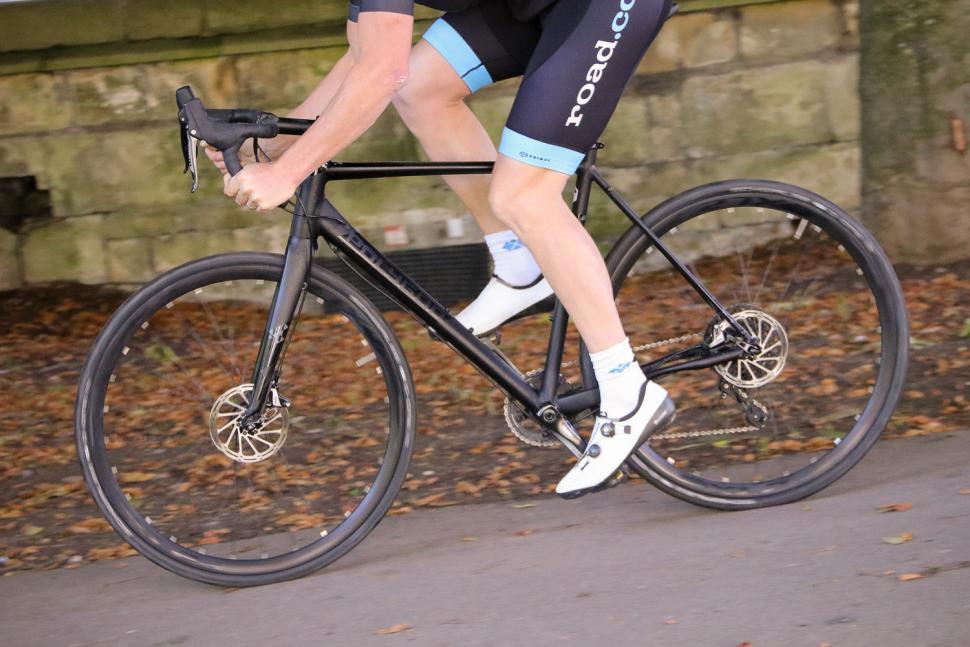
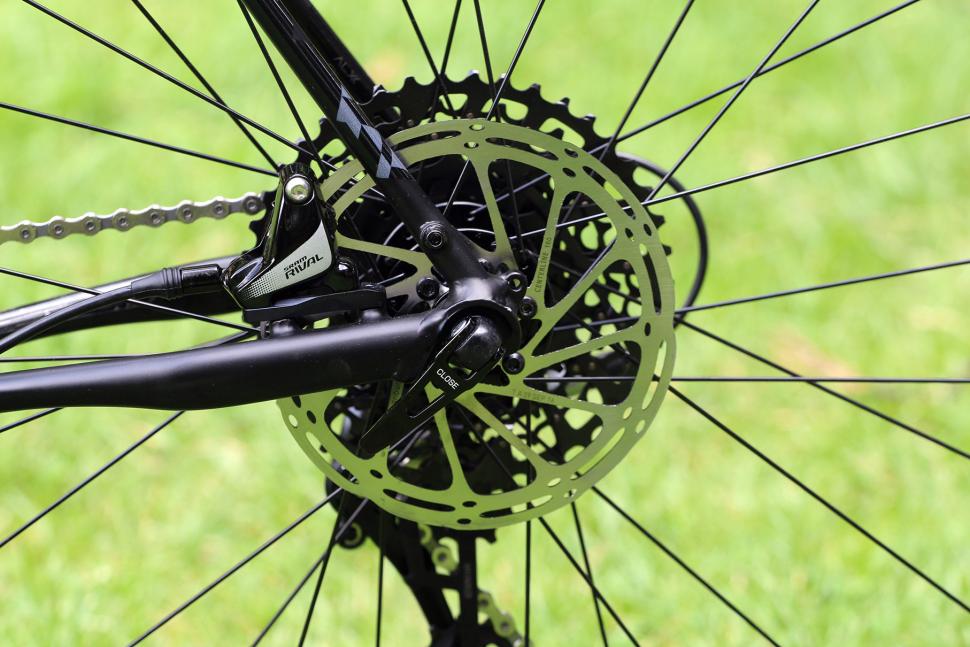
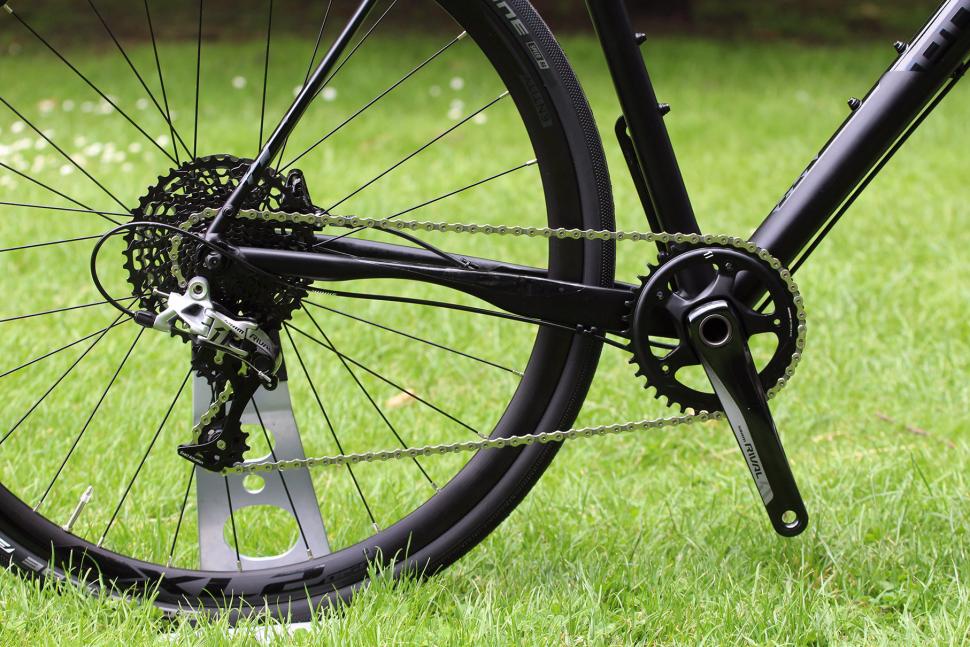


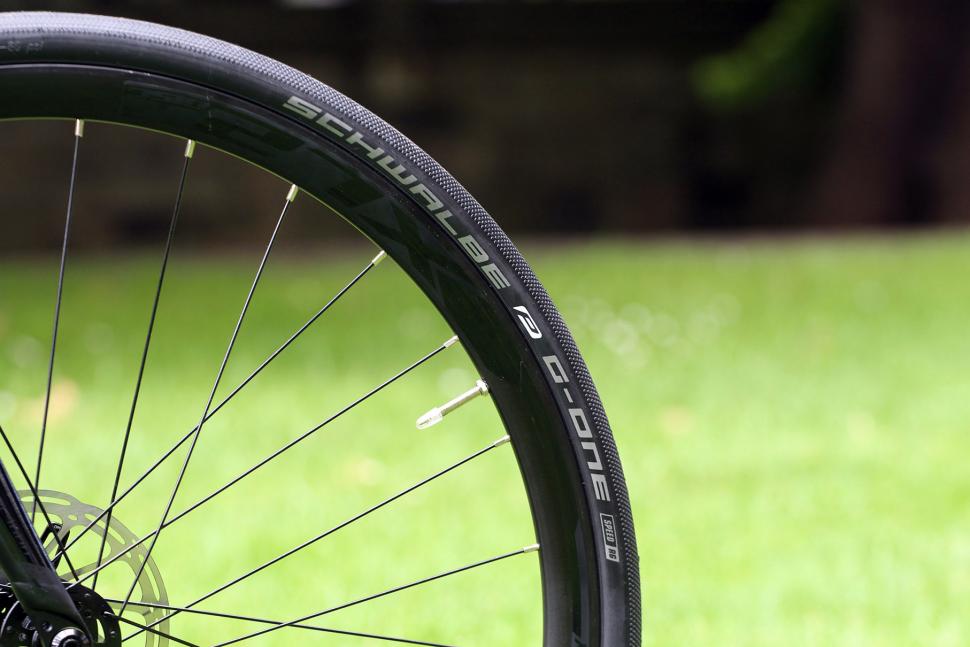
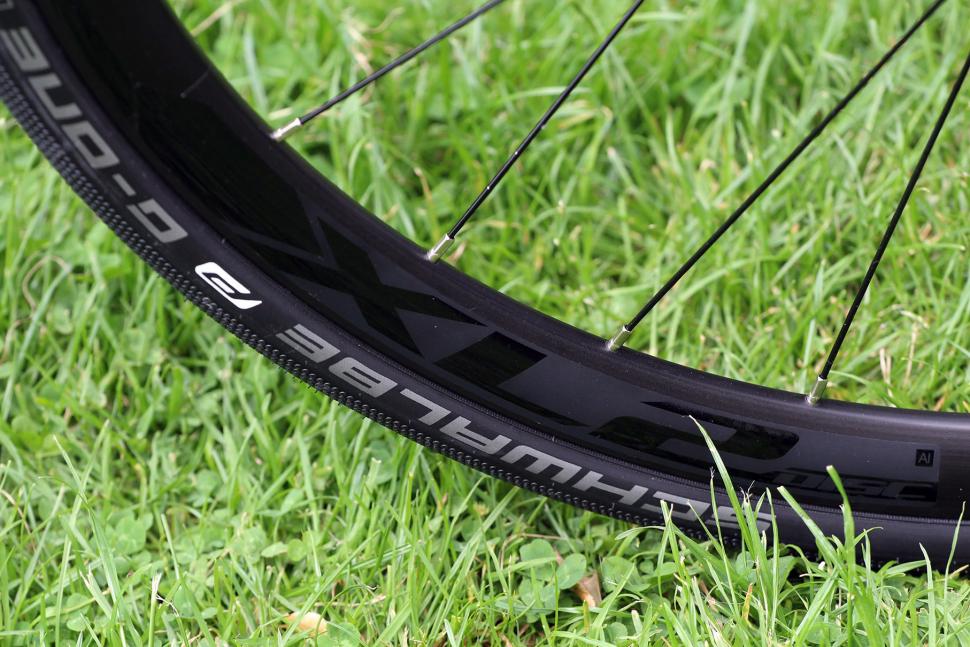
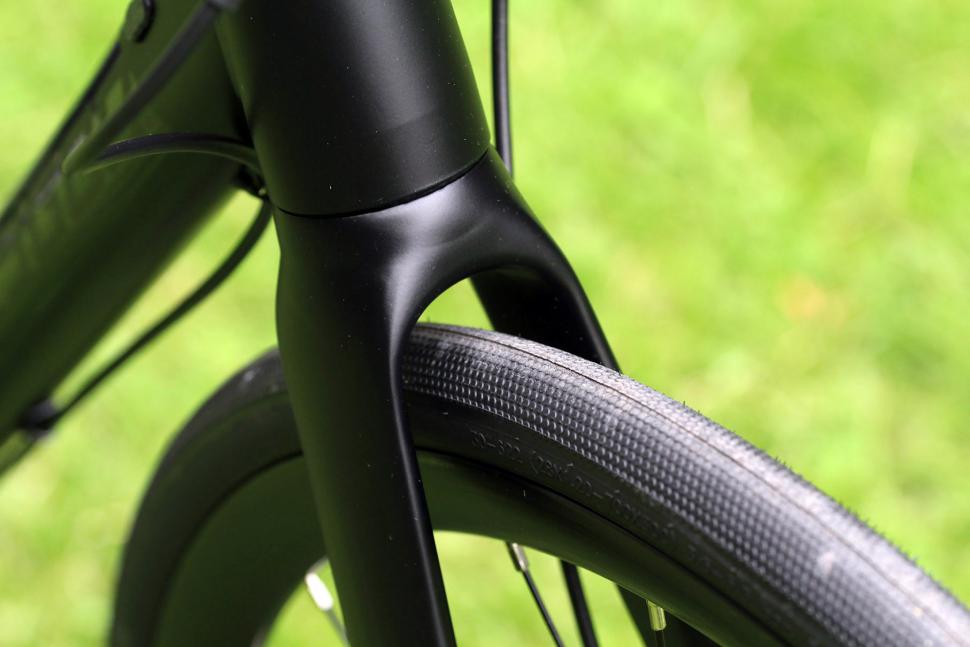
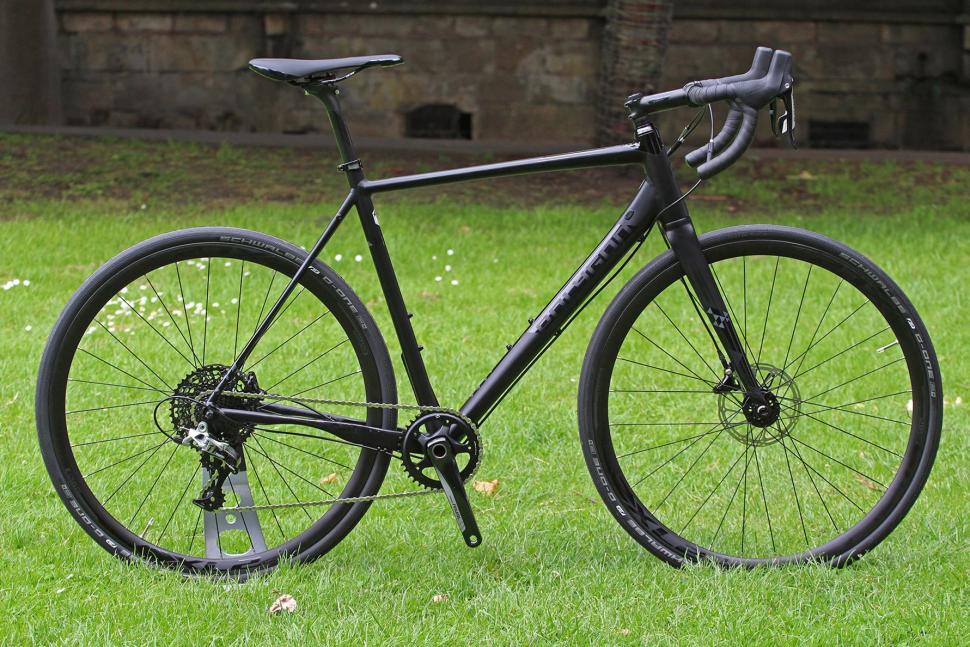
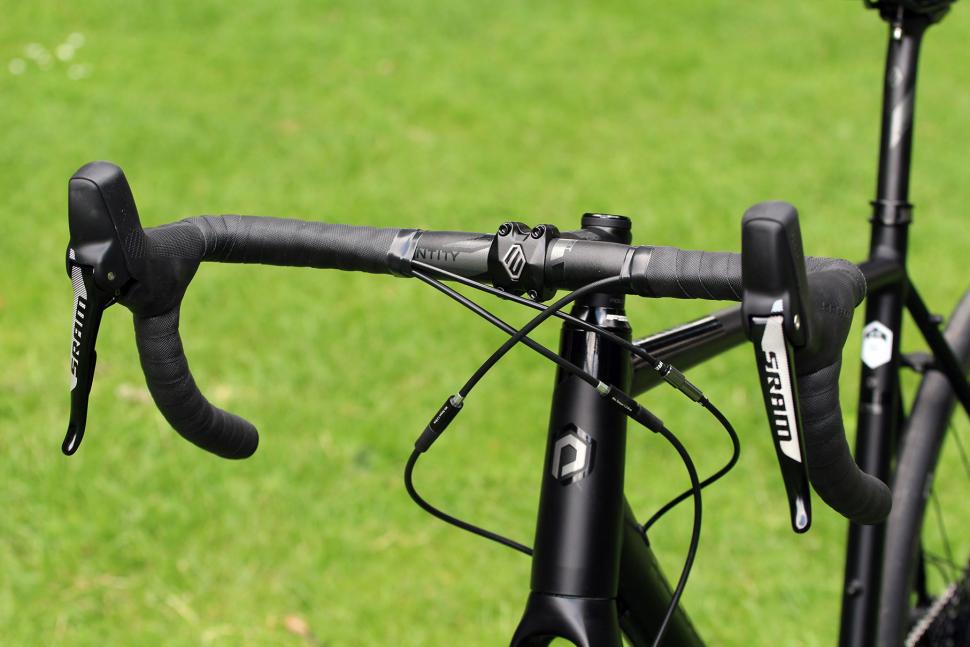


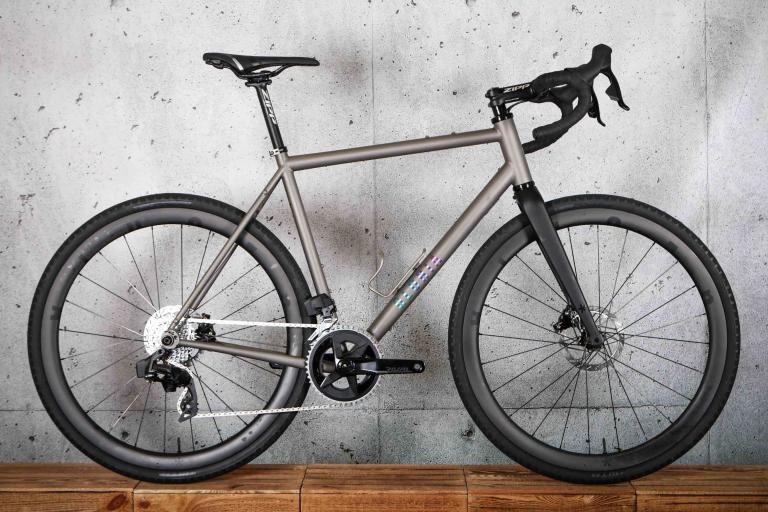
Add new comment
5 comments
Mine's not a gravel bike but I run an 11-32 cassette on road to haul my sorry ass up hills, and I do miss the narrow gear ratios of a smaller range cassette. Even in middle gears (say 5th, 6th and 7th) the jump can disrupt flow. It's the main drawback for me, although I do run a '1 by' with an 11-42 cassette on my mountain bike where it works well. Not having a front derailleur to worry about when charging around off-road makes a lot of sense, not so much on road (or gravel).
Polygon is an Indonesian outfit, and they're known for some pretty cracking bikes as of late. They're steadily making quite a few new fans, even on the MTB side too.
Eh, I have that same gearing. Sure the jumps are large at the very low end, but you only use those gears when it's extremely steep and then you'll be grateful for them. You do spin out over 30 mph but it's a good compromise for climbing. If you rarely tackle particularly steep hills then put a 42t ring on the front and bias it for speed instead. I've taken my bike on a two day ride with 20% climbs and a 30 mile canyon descent.. it's great.
We're all different, and one of the reason for more gears has being driven by the pros wanting easier transition between ratios. why do you think time trailists particularly used corncob freewheels BITD?
Going from a 36 to a 42 is easy for you maybe, but your change in cadence to maintain speed jumps from 90rpm on a 38-36 to 105 when going to the 42. And that's not the only jump, it's there for quite a few shifts. if you're okay with that, that's fine but it's most definitely not ideal going from gear to gear and having large increases or decreases in revolutions to maintain or change speed when transitioning between terrain differentials and other factors e.g. wanting to sprint out the saddle and/or increase speeds rapidly.
Fair enough, just offering my experience with riding this combo for nearly a year. In practice I wouldn't shift at 90rpm, it'd already be a very steep climb and it'd be more like to fall to 60rpm, when I'd bail out to the 42t for a more comfortable cadence.